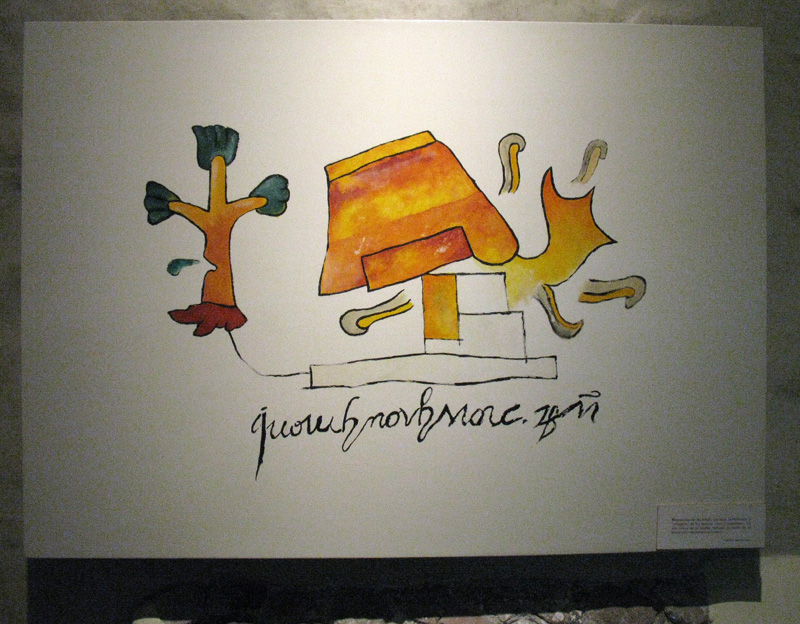Source: WTL© photo 2009 taken on site in the Palacio de Cortés.
Image: An enlarged polychrome Aztec glyph with the name of the city, Cuauhnahuac (i.e., Cuernavaca), written below in 16th century European script. The glyph is taken from the Codex Mendoza (1541).
Comments: This pictogram represents the Cuauhnáhuac temple in flames with the word symbol for the name coming from the tree on the left; that is, the toponym for the city is symbolized by a tree. The entire connected two-part glyph, therefore, represents the conquest of the city by Spanish conquistadors. The Codex Mendoza was created to be presented to Spanish king/emperor Carlos I/V. This Codex tells the history of the Aztec emperors (tlatoani) along with Aztec social customs. Aztec artisans produced this Codex in their own pictograms under the auspices of Spanish priests (hence, the Spanish writing under the pictograph). The Codex is named for the Viceroy Antonio de Mendoza (1535-1550). It is currently the property of the famous Bodleian Library in London.
Humanities Question: Please analyze the complete image above given what you know about (a) the Aztecs, (b) Cuernavaca, (c) the Spanish conquest, and, especially (d) the difference between European writing and Aztec pictogram.

